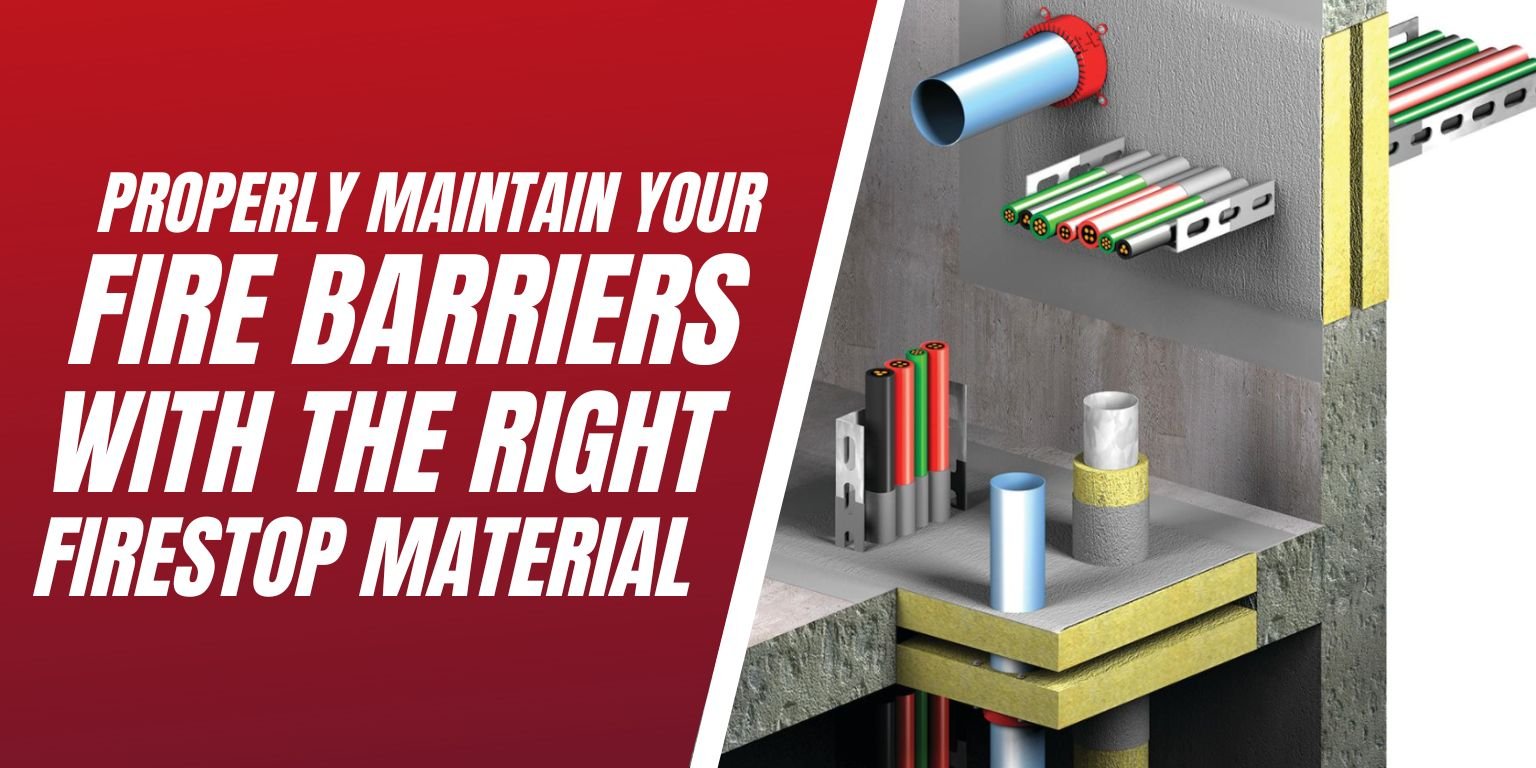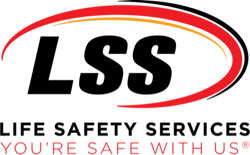
Compartmentalizing a facility is one of the best ways to help contain fire and smoke to its point of origin while waiting for first responders. One of the many ways to compartmentalize a facility is through the use of the building’s fire barriers.
Fire walls, partitions, and smoke barriers are designed to compartmentalize a building into sections, which helps prevent both fire and smoke from spreading throughout the building. However, it is not uncommon for these barriers to become damaged, altered or breached from penetrating items. This is where the use of firestop materials becomes important.
Firestop materials are used to repair and seal off any gaps and holes surrounding penetrating items in those particular walls, floors and ceilings. Some materials will swell up or expand in the presence of heat due to penetrating items, such as plastic pipes or wires that can melt or change shape during a fire. This swelling action prevents a small gap or hole from becoming a larger gap or hole, which allows the spread of fire and smoke to spread through a building. That’s why NFPA requires that any items that can damage, alter, breach or penetrate a building’s structure needs to be firestopped with the approved UL system. However, firestop materials are manufactured in various types and choosing the right product is a critically important to ensuring the required levels of fire resistance is achieved.
Firestop Installation Materials
One of the most common firestopping issues is improperly installing firestop materials. If a building’s fire barriers have not been properly maintained, then fire and smoke will spread quickly causing unnecessary property damage as well as putting people’s lives in danger. Here is a list of the most common firestop systems and how they are used to help prevent the spread of fire and smoke.
SEALANTS (Silicone, Latex, Intumescent) – are used in combustible penetrations, such as plastic piping, multiple cables, and sleeved piping.
WRAP STRIPS – are “rolls” or “strips” of intumescent material preformed in thick, thin, wide, or less wide strips. These strips expand 10 – 20 times their original state.
PUTTIES – are hand applied intumescent sealants, which are great for hard-to-reach areas, but typically limited to metal piping and cables.
PILLOWS – are typically made from unexpanded vermiculite, mineral wool coated with an intumescent spray, and packaged in “bags/pillows”. These firestop products might be protected with stainless steel mesh, in some cases. They also must be stacked to the exact dimension shown in the tested and listed system drawings.
FIRESTOP MORTARS – are perlite, foam or vermiculite concrete mortars that expand upon curing to lock themselves in place.
COMPOSITE SHEETS – 3’ x 4’ sheets of 28 ga. sheet metal, coated with intumescent material, laminated to aluminum foil and wire mesh. Used for large openings, these sheets are excellent for multiple penetrating item systems.
FIRESTOP BRICKS / PLUGS – are made of urethane foam with graphite filler as the intumescing agent, and are used as blocks in a large and small opening.
PRE-FABRICATED KIT SYSTEMS – are very detailed, with a special insert for each penetrating item. The multiple inserts are surrounded by a steel perimeter cabinet, compressed with steel assemblies. They are great systems for the client who wants both aesthetically pleasing and practical application.
SPRAY PRODUCTS – are used to increase protection over sealant systems in joint systems such as “top of wall” and perimeter fire containment systems. These systems are applied very thin, to about 1/8” thick for an effective seal.
Choosing the best firestop material for your facility is critical to the integrity of your building as well as the safety of its occupants. Each firestop material is specifically designed to help prevent the spread of fire and smoke through fire barriers. When using the proper equipment in the proper areas, firestopping can help to seal off and stop the spread of fire and smoke in the event of an emergency.
LSS Fire Safety Team
LSS Life Safety Services is FM Certified with DRI Certified managers on staff. Our installers are OSHA 10 trained, STI FIT Level Certified, and have extensive installation experience with STI, 3M, and HILTI systems.
LSS Life Safety Services®: FM 4991-certified to provide firestop installation services
- Install UL classified Firestop systems based on Statement of Conditions
- Prepare submittal documents to submit to AHJ
- Master report with Digital Documentation listing UL classified Fire Stop systems installed
- Firestopping Survey is also available which offers a detailed fire barrier survey, Statement of Conditions (SOC), including the type of barrier, description of penetration needing firestop installation, and recommended UL-system
Contact Us Here or call us at 888-675-4519

